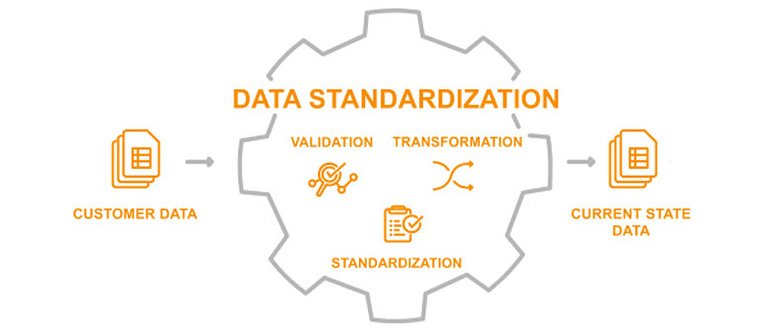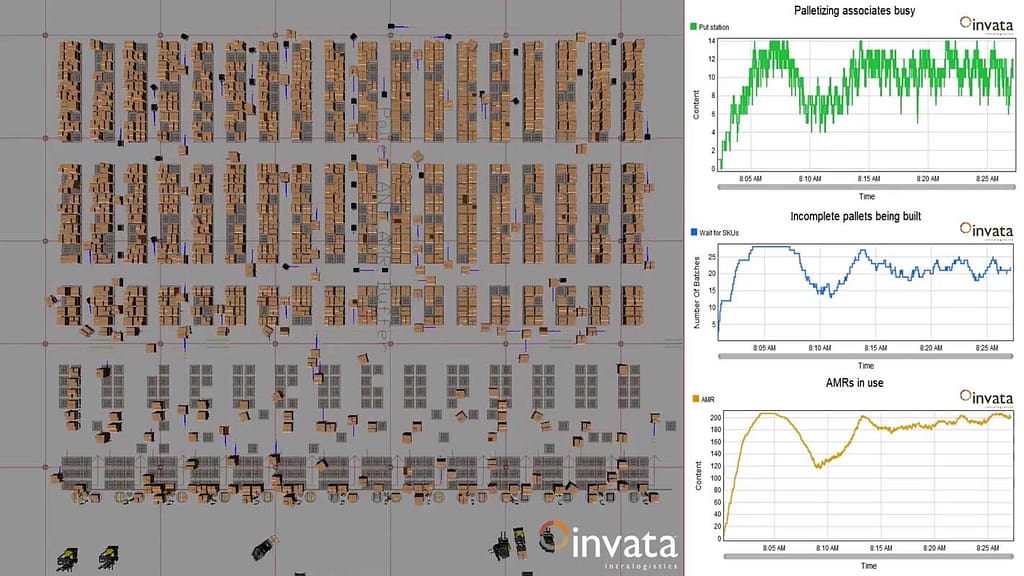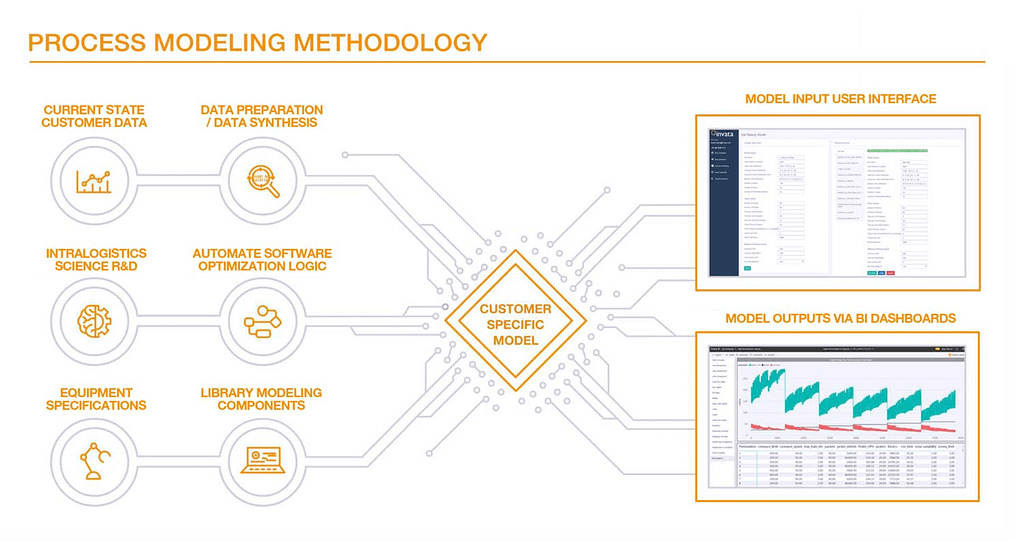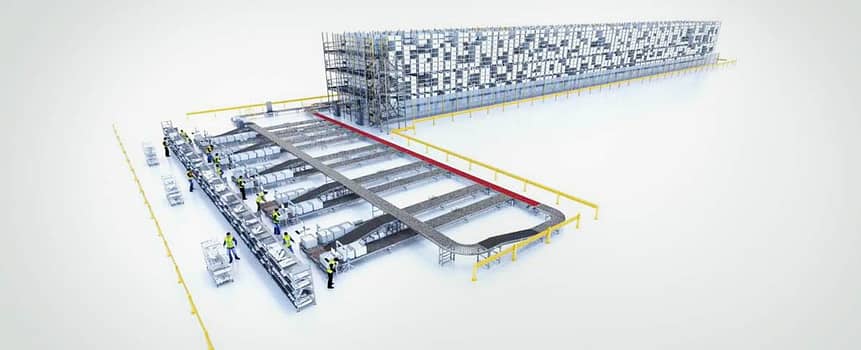The Good News:
If you’re considering automating your fulfillment process, or optimizing an existing automated fulfillment operation, there are a lot of automated fulfillment solutions to choose from out there.
The Bad News:
With so many choices available, making the wrong choice becomes a lot easier.
And when you consider that the solution you choose will make or break the success of your operation, that’s a lot of pressure.
Choose wisely, and you win. Choose poorly, and cross your fingers and wait.
So How Do You Choose?
How do you ensure the automated fulfillment solution you’re choosing will solve the strategic challenges you face? And how do you tell the difference between what one provider offers versus another?
The answers lie in understanding each provider’s solution development process. In other words, understanding their approach and processes for the following:
- Data preparation
- Data synthesis
- Computer simulation modeling
The more you know about how a provider arrives at a solution, the more informed you will be when it comes to choosing between solutions.
With that in mind, here are a few tips to help ensure you make the right choice.
Step 1: Use Data as Your Guide
According to the Intralogistics Science Team at MSI Automate…
Every business has its own unique data profile. Yours included.
Built from a mix of operational data including orders, item master, receipts, inventory, slotting master, location master, transaction logs, and shipping detail, this data profile tells the story of your business.
And hidden within that profile are the answers to many of the strategic challenges your business faces.
The key is in being able to unlock the secrets within the data — clustering, correlations, causality, and connections — that reveal the insights needed to achieve strategic solutions.
If your supplier does that, it can provide automated fulfillment solutions that are not only tailored to your strategic business challenges, but that can also guarantee your fulfillment success.
If your supplier fails to do that, any “solution” it provides will have been built on a foundation of guesswork.
Step 2: Understand How Invested Your Provider is in Understanding Your Data
Knowing how your provider arrives at a solution can tell you a lot about the reliability of that solution.
Key to that is understanding the tools and techniques your provider uses in solutions development. Finding out how invested they are in the solution development process will tell you a lot about their dedication to delivering quality solutions.
The Intralogistics Science Team at MSI Automate has lead the material handling automation industry in the creation of a proprietary, industry-specific AI tool set designed to:
- Enable rapid solution development, testing, and proof of concept.
- Use machine learning to capture underlying relationships within a customer’s data and replicate them into the future.
- Enable study and understanding of the sensitivity of our designs through the creation and testing of multiple alternative future scenarios.
- Improve the quality and accuracy of system sizing through iterative simulations.
Using this tool set, the team is able to:
- Rapidly validate and load prospect/client data into a standard set of data tables.
- Use current state data to create future-state data for various growth scenarios.
- Emulate technologies options.
- Optimize algorithm performance.
This not only ensures faster commissioning while lowering our client’s investment risk, it also provides customers with the highest level of design certainty by ensuring designs are built on insights learned through customer data.
If your provider doesn’t offer this, expand your search for solutions.
Step 3: Scrutinize Your Provider’s Data Preparation Process
Your data holds the secrets to your strategic success, but only if it is prepared in a way that supports and empowers the analytics process.
Meticulous, computerized data preparation is crucial to successful analytics outcomes. Manual data preparation (i.e. the spreadsheet), on the other hand, has been shown to lead to inaccurate assumptions and errors in logic that can seriously compromise the analytics process.
The MSI Automate team uses a systematic, computer-driven tool set to prepare customer data (aka current state data) for analysis that covers three critical steps:
- Validation
- Transformation
- Standardization
Here is a closer look at each step:

Validation
Also referred to as invalidation, this is a data cleaning process that performs validation checks on incoming data, ensuring it conforms to an extensive set of industry specific rules. The MSI Automate tool-set:
- Rapidly validates data and loads it into a standard set of data tables.
- Speeds the cleaning process, freeing it from errors and the poor assumptions that often accompany manual cleaning.
- Enables more time spent on analysis, due to fewer errors in data results.
Transformation
A data conversion process, this step transforms raw data into useable business intelligence. In doing so, it:
- Breaks down customer data into the components needed to identify opportunities and iterate on design concepts. i.e. Order data gets converted to daily volumes, seasonal trends, order profile information (lines per order, units per line, etc.), UOM analysis, velocity analysis, inventory analysis, etc.
- Ensures an error free analysis within minutes (versus weeks) of receiving the raw data.
- Converts data into insights that guide in the solution development process.
Standardization
The data standardization process converts disparate datasets into a common data format that empowers the analytics process. This step:
- Empowers collaborative research, large-scale analytics, and application of sophisticated tool sets and methodologies.
- Enables robust quality assurance, eliminating human error.
- Allows for more analyses to be performed faster, ensuring a greater degree of certainty in the solution development process.
Step 4: Look to the Future
Once your current state data has been properly prepped, the next step is to create what is known as future state data.
According to the Intralogistics Science Team at MSI Automate:
Future state data provides the basis for future state modeling and as such is crucial to determining how any proposed solution will perform against your business’ future operational requirements.
It requires a sophisticated data synthesis process that merges your current state data with a variety of potential growth scenarios, operational assumptions, and rationale specific to your business, and then employs machine learning to capture underlying relationships within your current data and replicate them into the future.

If your provider does not offer you this service, you should shop around, as it is key to:
- Creating detailed operational data for use in future-state modeling and design testing.
- Understanding the sensitivity of a design through the creation and testing of multiple future scenarios.
- Improving the quality and accuracy of system sizing.
- Enabling iterative simulation and algorithm development.
- Providing customers with the highest level of design certainty.
Step 5: Model Your Success
The final step in understanding how your provider arrived at the solution they are offering is to scrutinize their computer simulation modeling and analysis process — given they have one.

When done right, computer simulation modeling provides a virtual environment in which design ideas can be tested, discreetly analyzed, iterated, refined, and proven out — all before a single piece of equipment is purchased or bolted to the warehouse floor.
It can also be used to expose the break points in any system design, thereby empowering the design of more efficient and resilient systems. And it can even be used to drive the development of more robust algorithms that are adaptable to wider swings in production demand.
But that is only possible if your provider has the experience, expertise, resources, and artistry needed to simulate real world conditions. So analyze their process and capabilities carefully.
The MSI Automate team uses a multi-phase, iterative modeling/simulation process that focuses in two interdependent areas:
- Inventory Modeling
- Process Modeling
Focusing first on developing and proving out strategies for inventory processing (i.e. the most efficient method for handling/storing/accessing your inventory), the MSI Automate team then incorporates that logic into developing and testing strategies for the most efficient approaches to order processing, assuming varying potential growth scenarios.
In the process, the MSI Automate team evaluates strategies from both a capital expense (CapEx) and operational expense (OpEx) perspective, weighing each client’s specific budget concerns, and offering scenarios to align solutions accordingly.

The approach culminates in clients being supplied with business intelligence dashboards they can use to evaluate and understand system performance on any given day for years into the future.

If your provider does anything less than that, you should shop around. We have an extensive blog on computer simulation modeling to help you in the shopping process.
Understanding Your Business from a Data Perspective
The key to creating automated fulfillment solutions that take a distribution operation from cost center to strategic edge is the process of data preparation, data synthesis, and computer simulation modeling that is used to develop the solution options.
To solve the strategic challenges your business faces, you need a fulfillment solutions provider who will understand your business from a data perspective. Proper preparation, analysis, and synthesis of your company data reveals insights that simply will not be otherwise understood.
So when it comes to choosing a solutions partner, choose the provider that best understands your data and uses the insights gained from it to craft a solution that solves your strategic challenges.
…
Take the first step in solving the strategic challenges your business faces by setting-up a free consultation with our team.
Walter High is VP Marketing at MSI Automate, where he has worked since 2012.

